Abstract
1. The effects of prostaglandin E2 (PGE2) on ion transport were investigated in guinea-pig isolated gastric mucosa. 2. Under resting conditions the mucosa produced a short-circuit current (SCC), the majority of which could be attributed to electrogenic chloride secretion. This interpretation was confirmed by the dependence of the basal SCC on extracellular chloride, and inhibition by the chloride channel blocker, diphenylamine-2-carboxylate. The mucosa also exhibited low rates of acid secretion and of sodium and rubidium absorption. 3. PGE2 stimulated an increase in net chloride secretion which was more than sufficient to account for the concomitant increase in SCC. As with the basal SCC, the SCC response to PGE2 was chloride dependent and inhibited by diphenylamine-2-carboxylate. PGE2 also significantly increased acid secretion and net rubidium absorption, but these changes were not sufficient to account for SCC. 4. The H+-K+-ATPase inhibitor, omeprazole, inhibited basal and PGE2-stimulated acid secretion, but did not modify the effects the PGE2 on net chloride secretion, SCC or conductance, suggesting that these effects of PGE2 were not related to changes in gastric acid secretion. 5. Both basal and PGE2-stimulated SCC were dependent on extracellular sodium and inhibited by ouabain, indicating the importance of a sodium gradient and the Na+-K+-ATPase in maintaining the electrogenic properties of the mucosa. 6. These results are consistent with the view that PGE2 stimulates electrogenic chloride secretion in guinea-pig gastric mucosa, and provide an ionic basis for the stimulation of secretion of sodium and chloride by prostaglandins observed in mammalian gastric mucosa in vivo.
Full text
PDF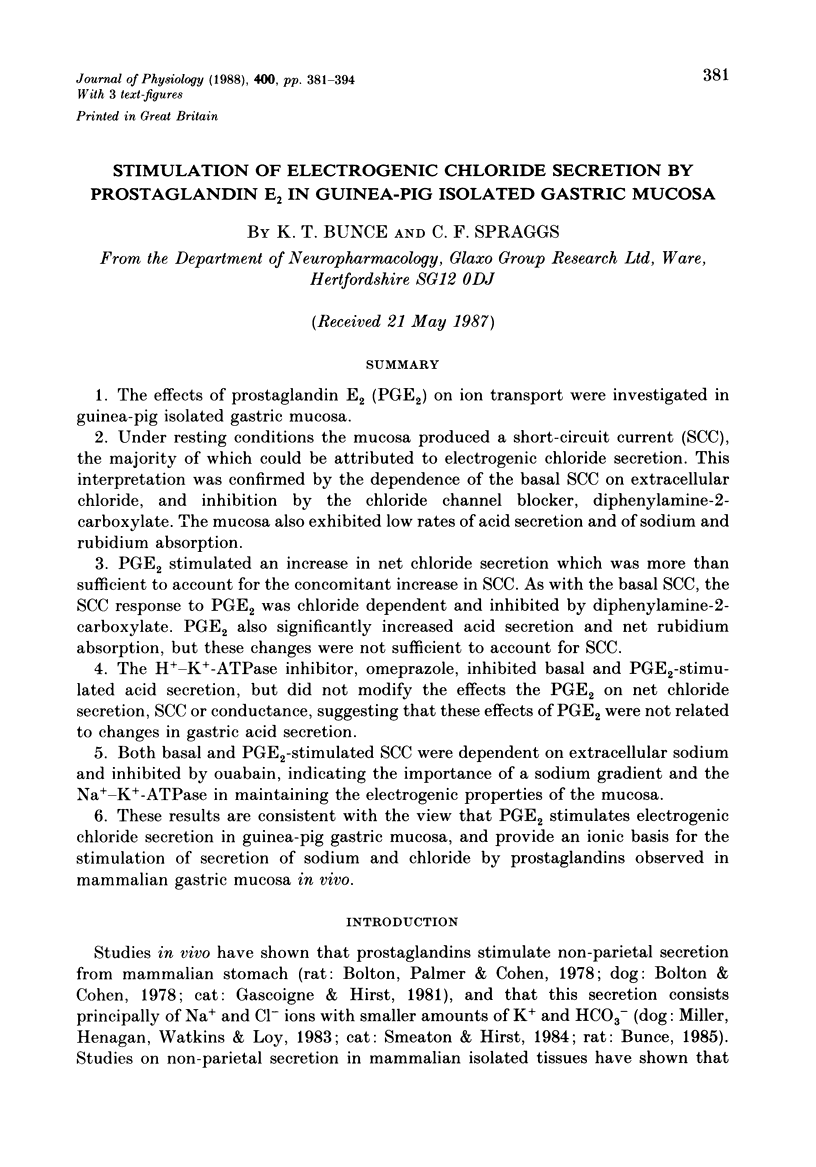

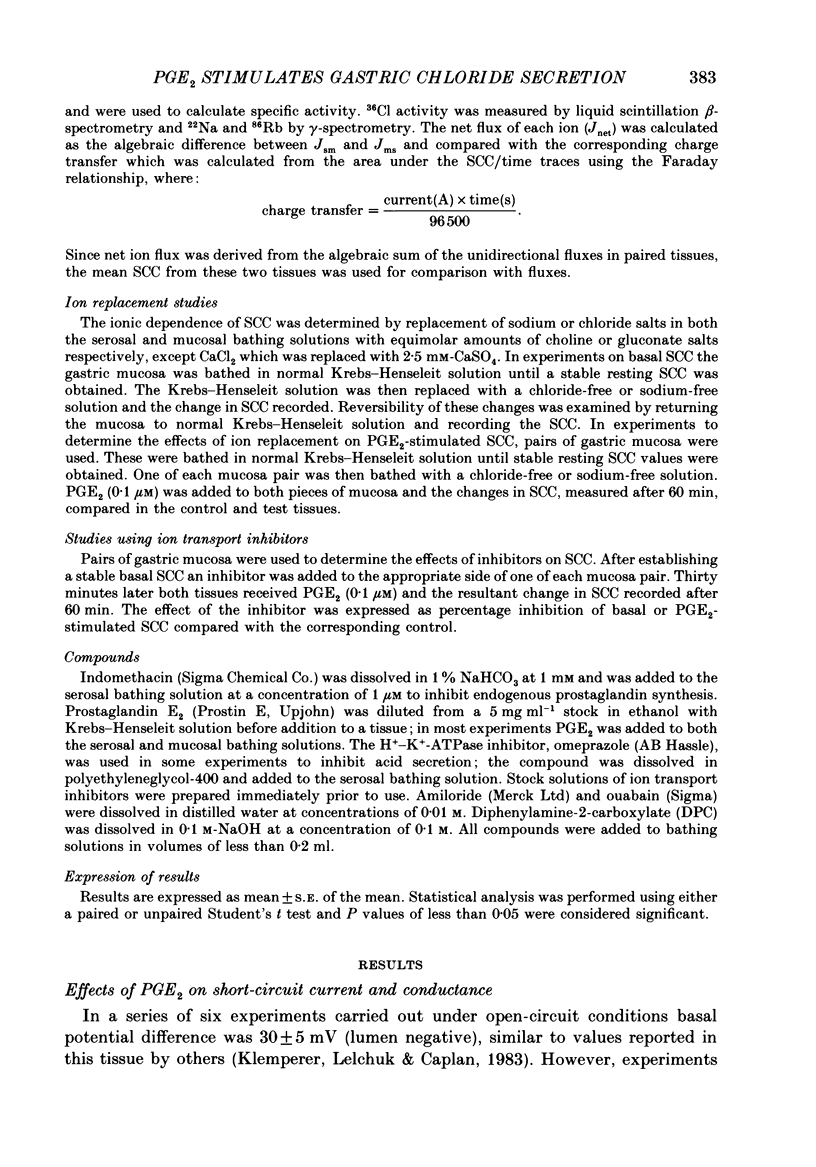
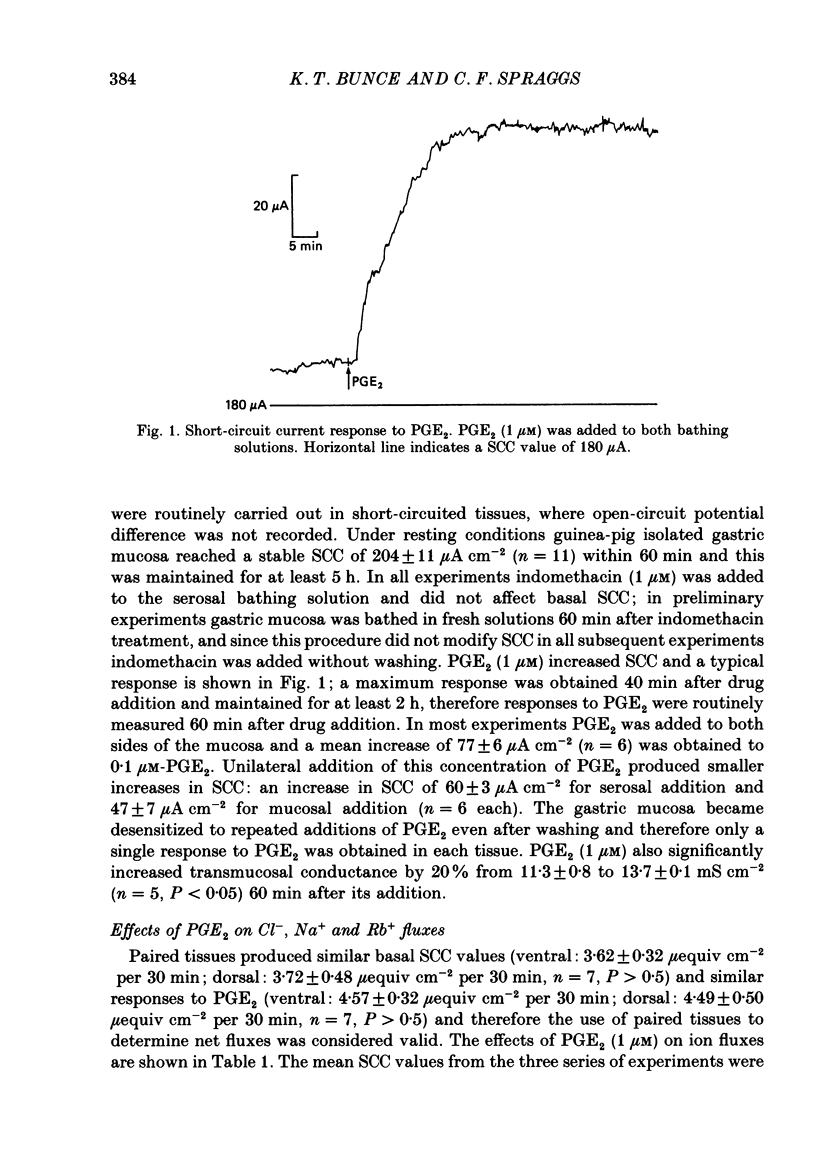
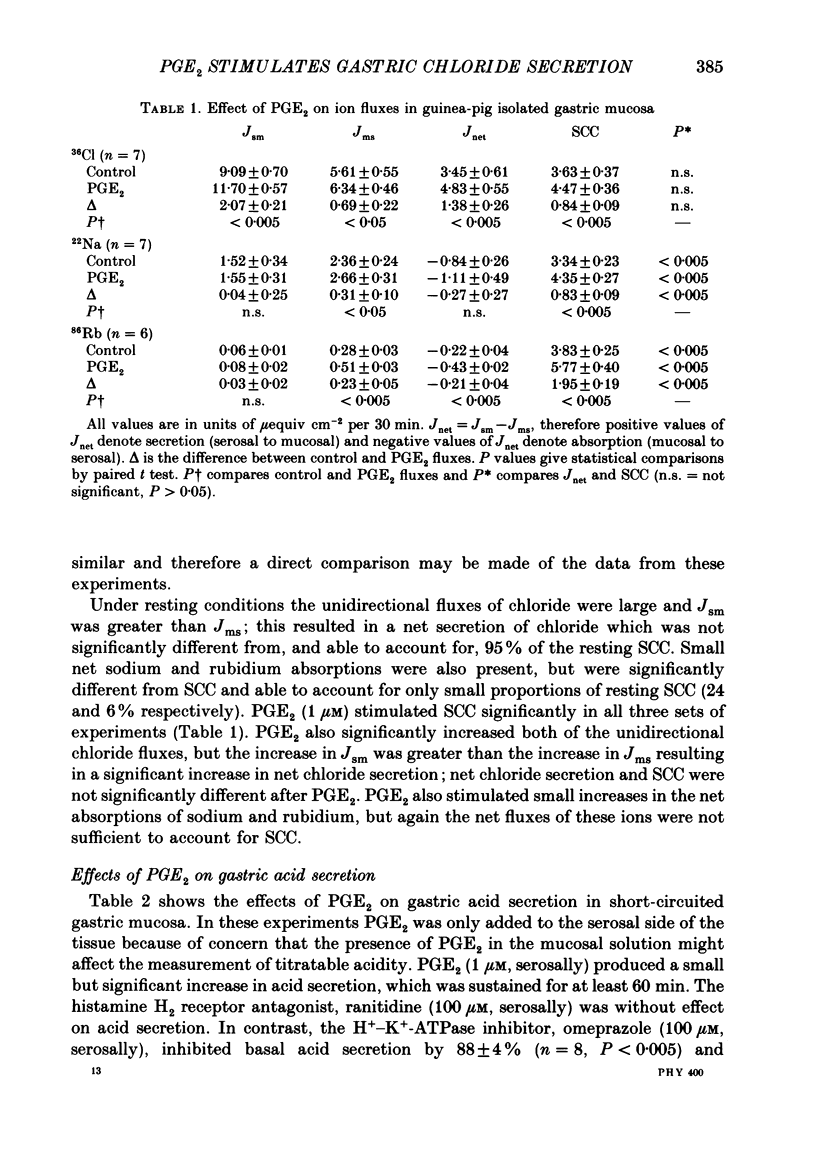
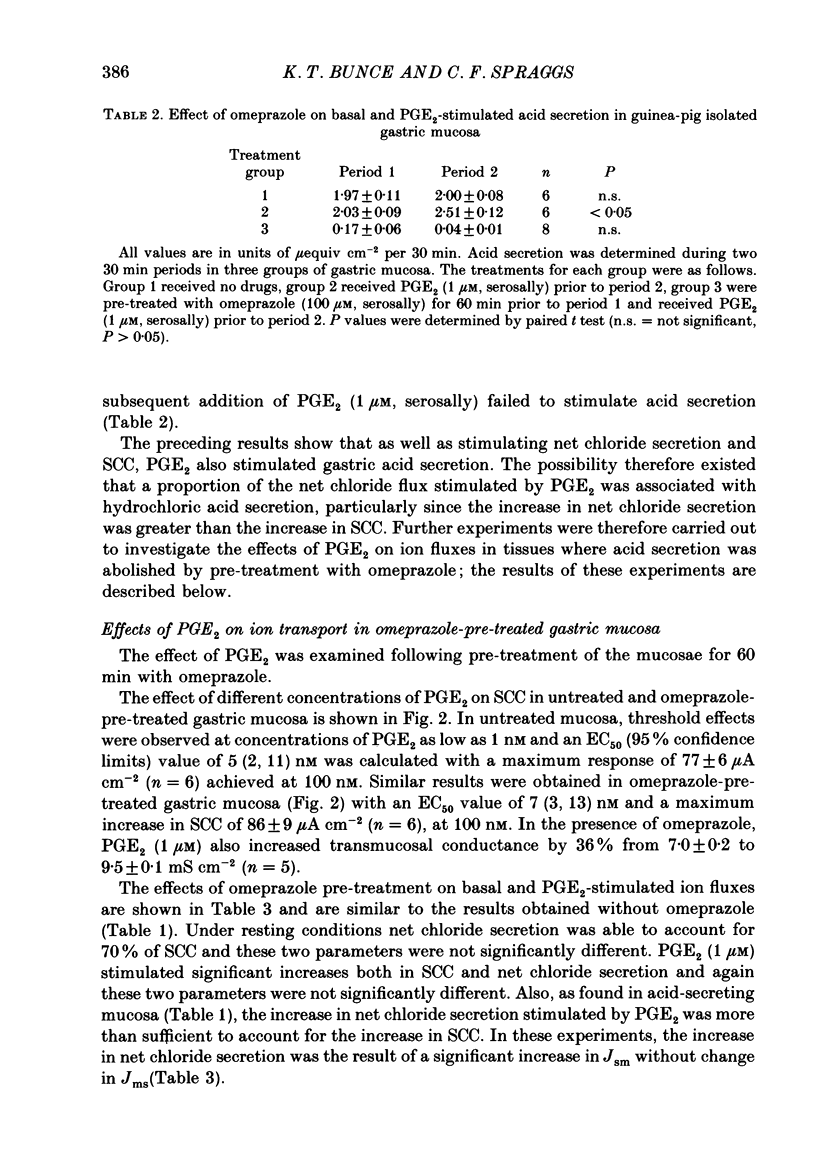
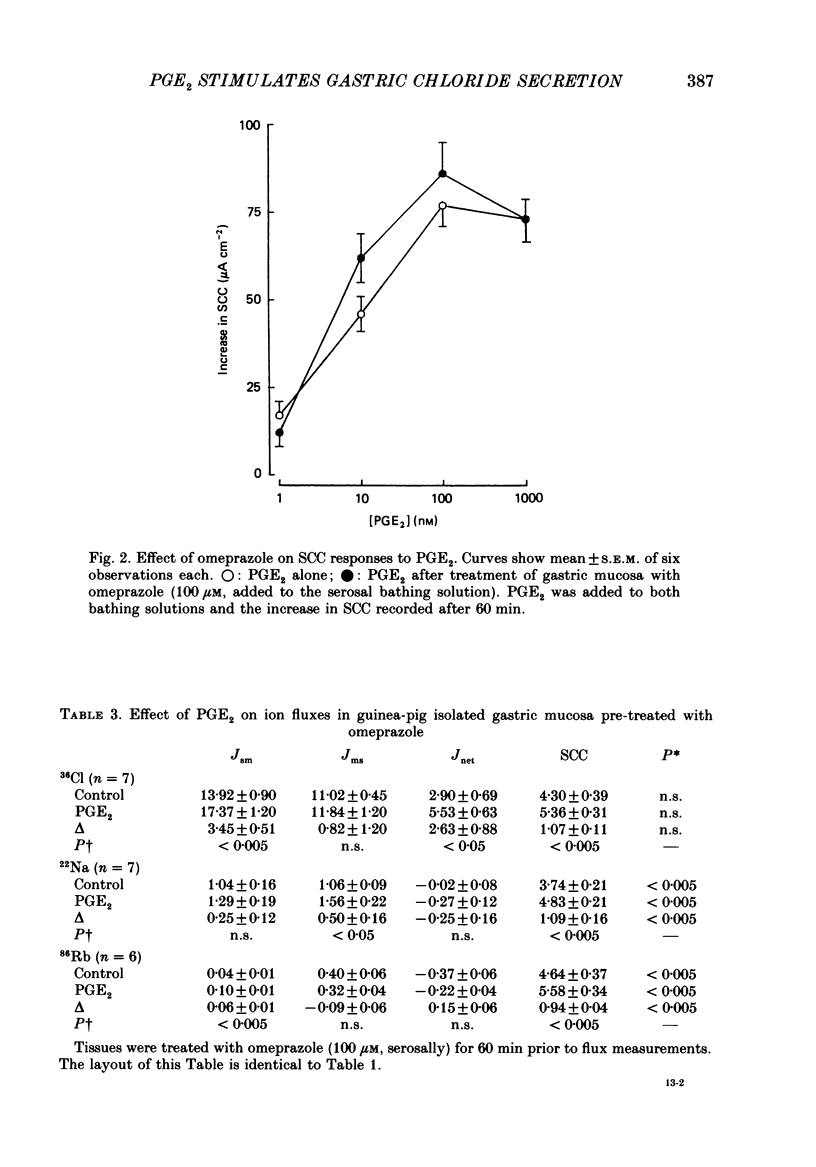
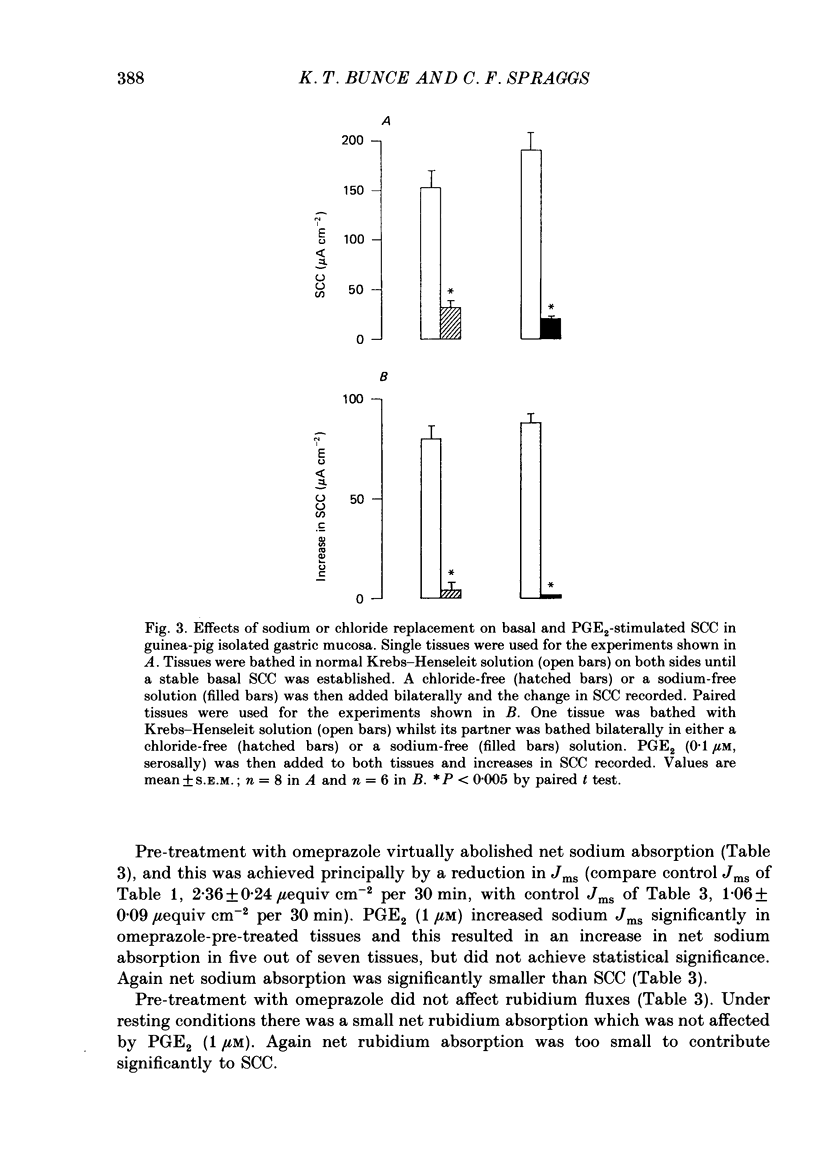
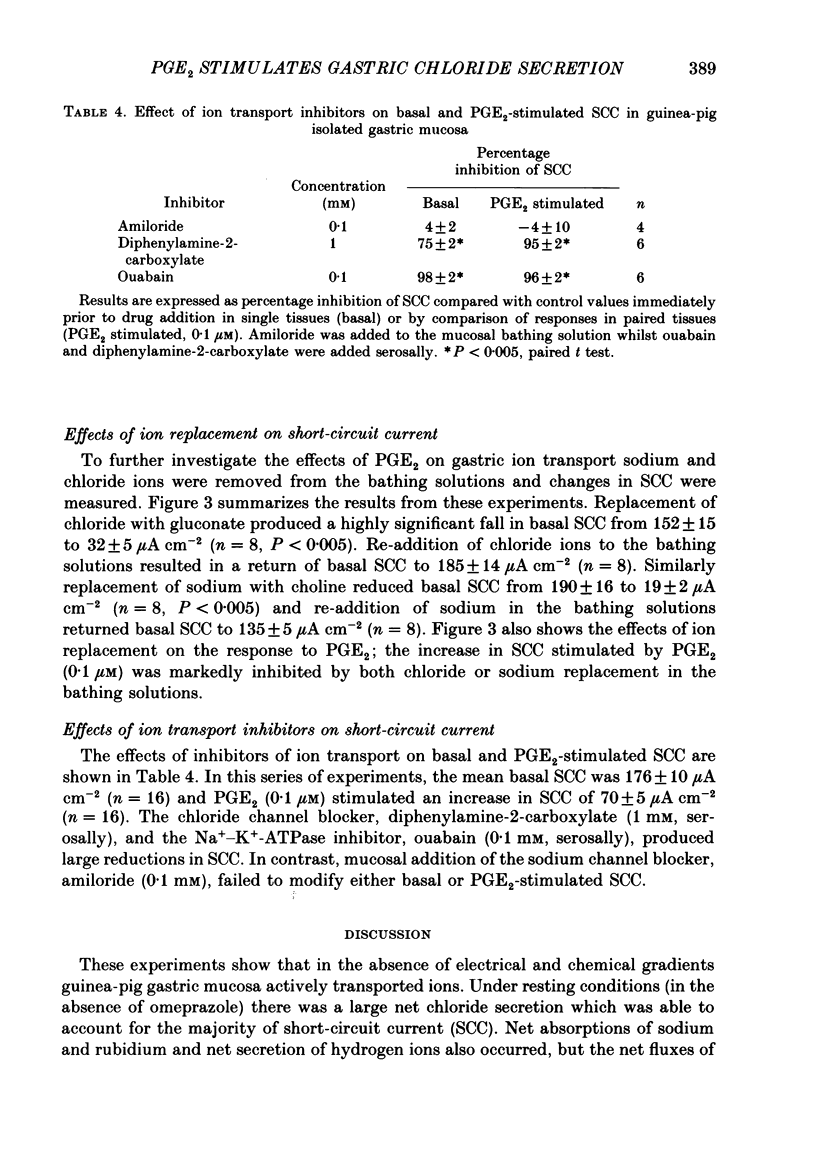
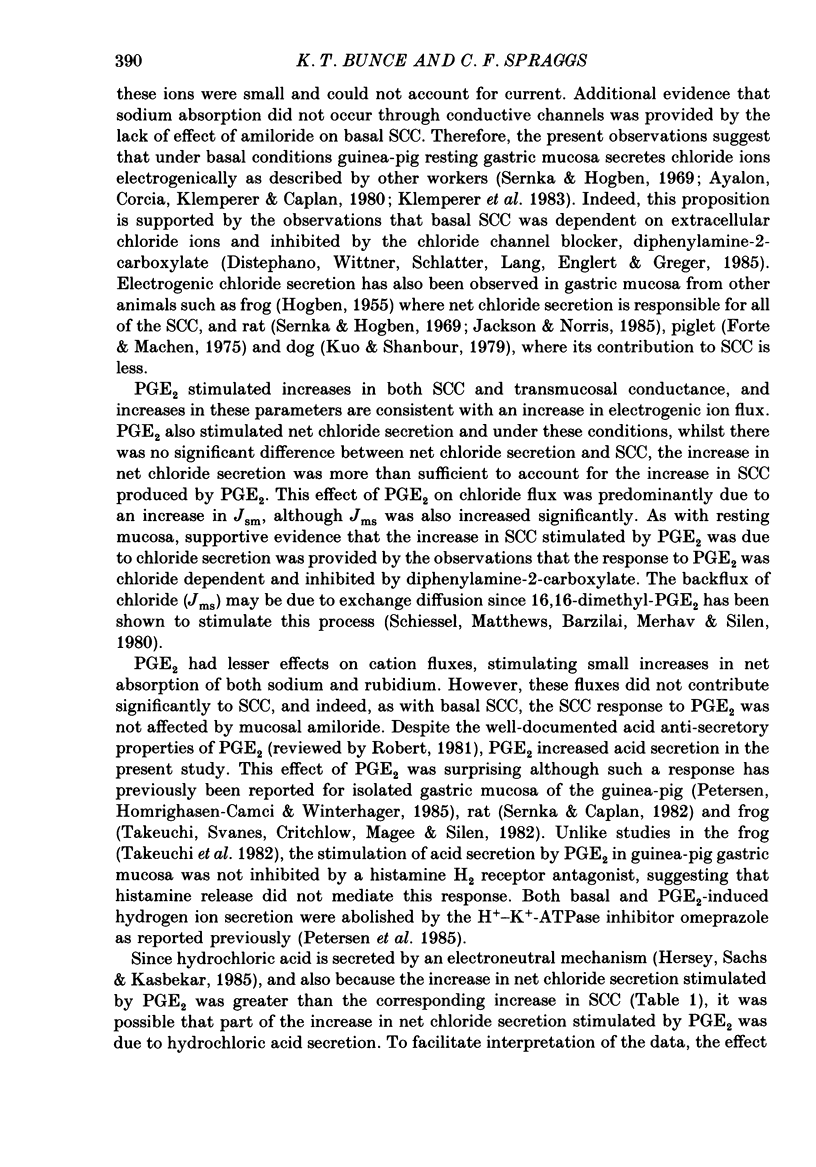
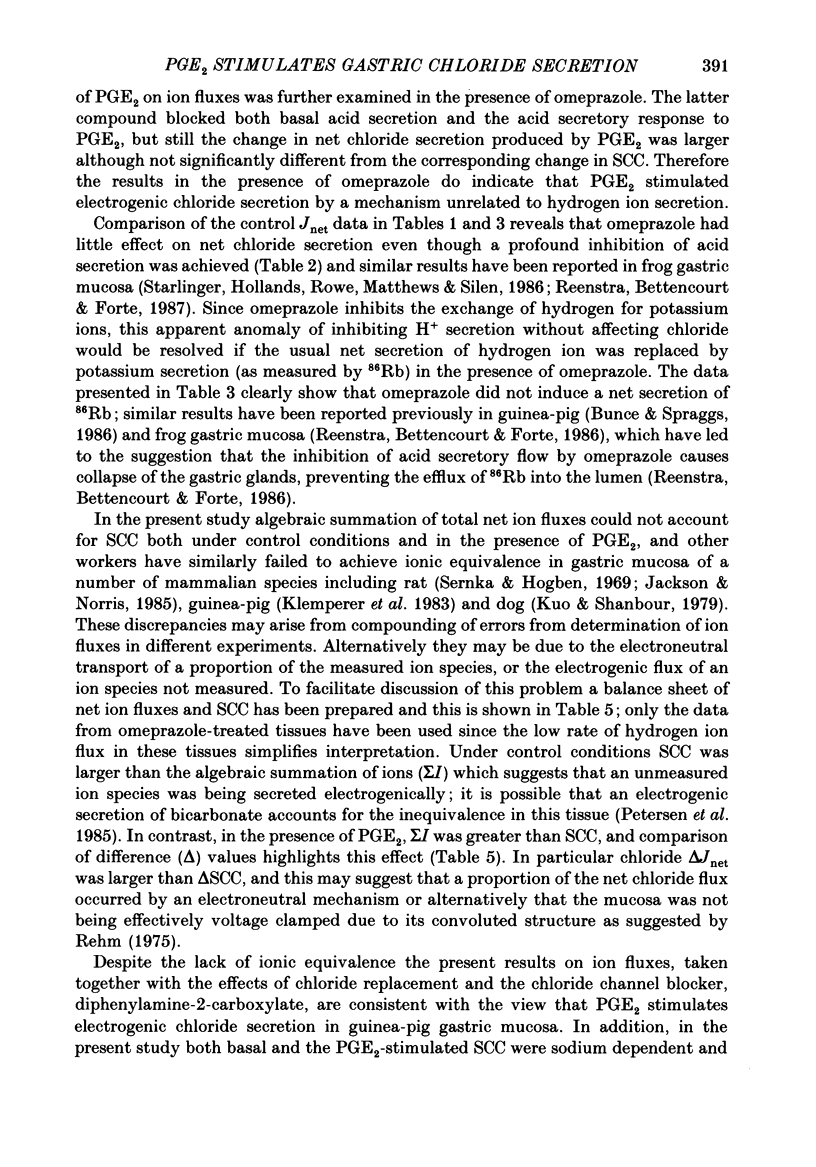
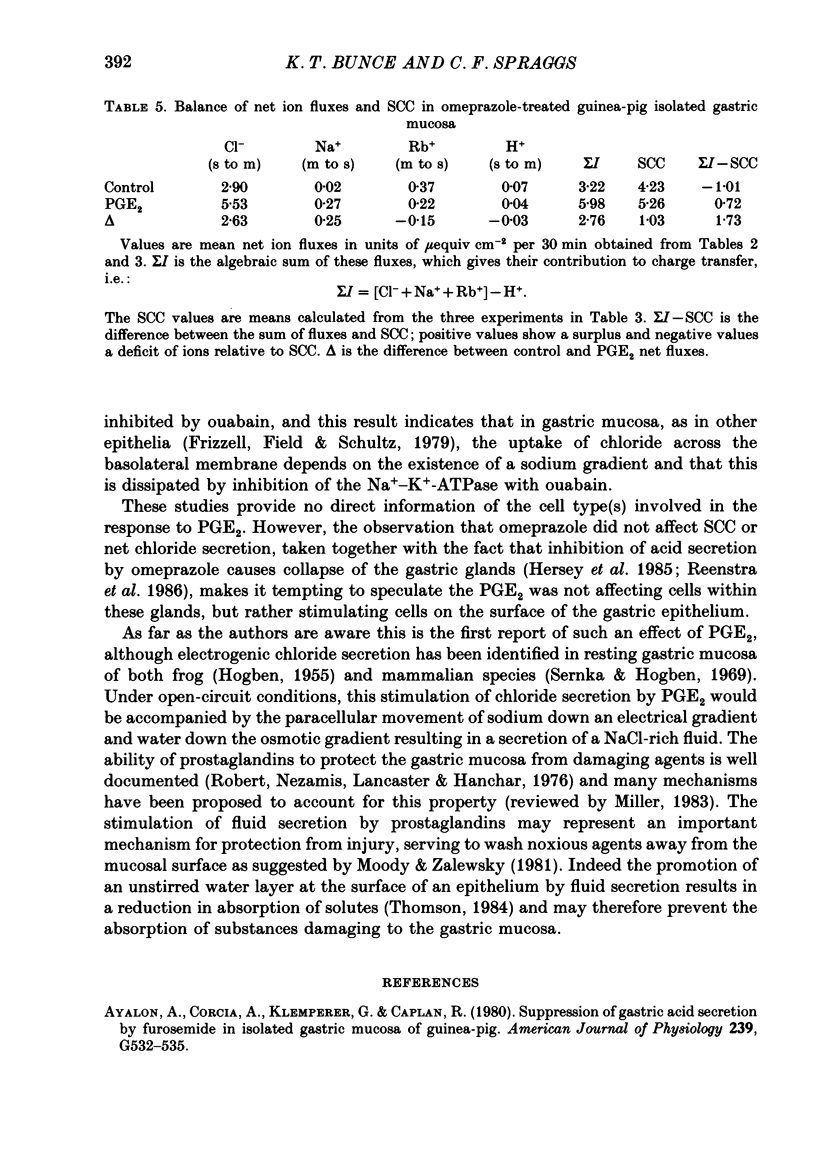
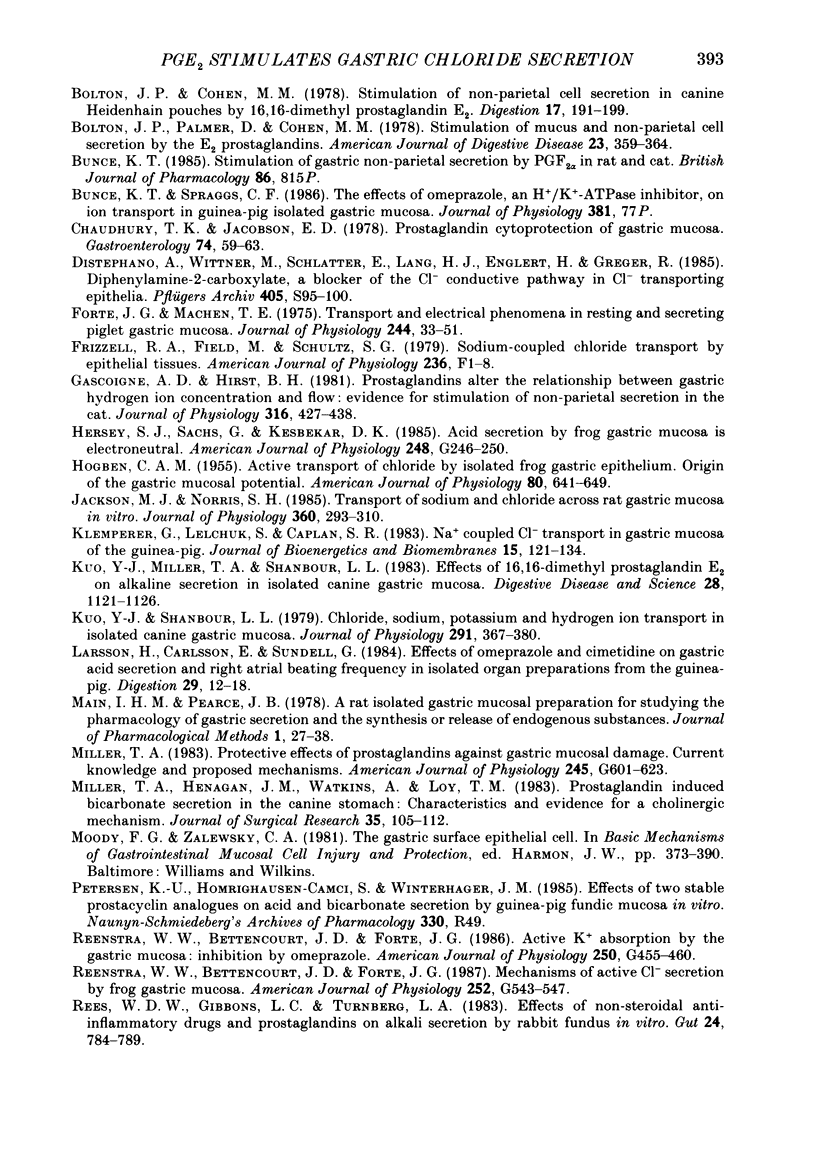
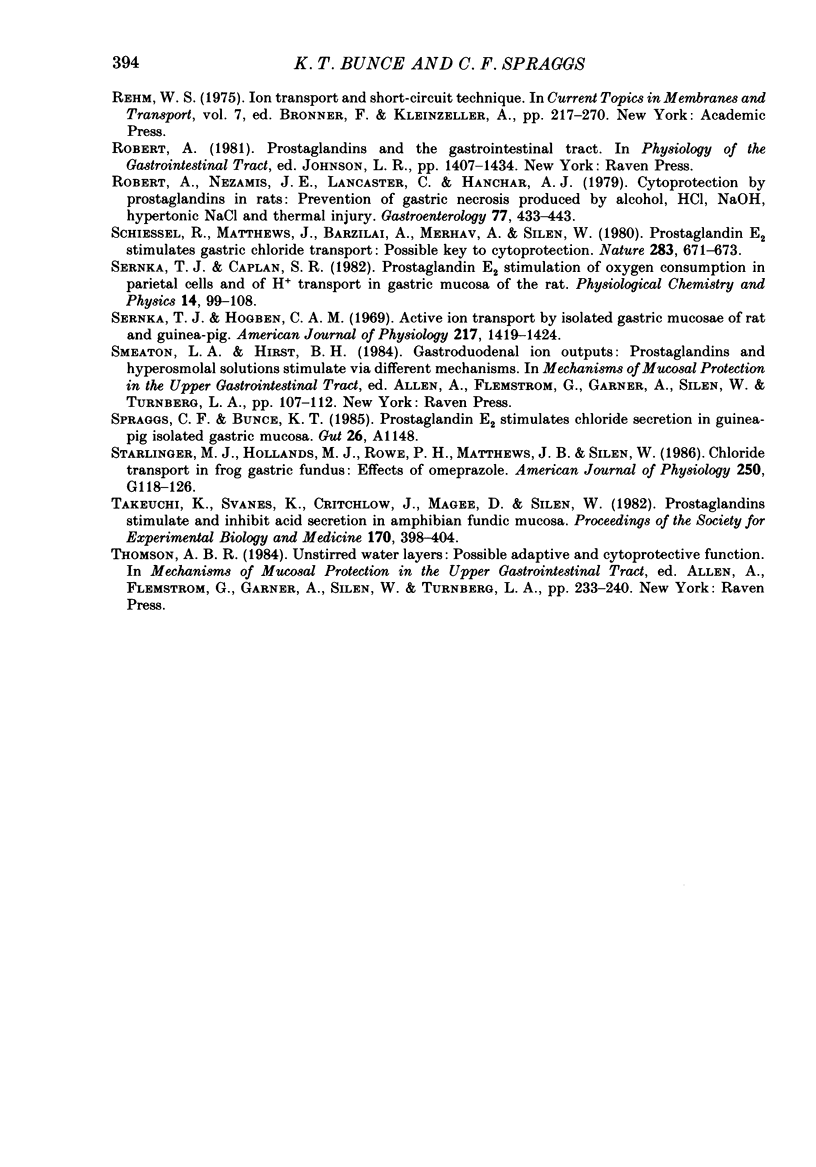
Selected References
These references are in PubMed. This may not be the complete list of references from this article.
- Ayalon A., Corcia A., Klemperer G., Caplan S. R. Suppression of gastric acid secretion by furosemide in isolated gastric mucosa of guinea pig. Am J Physiol. 1980 Dec;239(6):G532–G535. doi: 10.1152/ajpgi.1980.239.6.G532. [DOI] [PubMed] [Google Scholar]
- Bolton J. P., Palmer D., Cohen M. M. Stimulation of mucus and nonparietal cell secretion by the E2 prostaglandins. Am J Dig Dis. 1978 Apr;23(4):359–364. doi: 10.1007/BF01072421. [DOI] [PubMed] [Google Scholar]
- Chaudhury T. K., Jacobson E. D. Prostaglandin cytoprotection of gastric mucosa. Gastroenterology. 1978 Jan;74(1):58–63. [PubMed] [Google Scholar]
- Di Stefano A., Wittner M., Schlatter E., Lang H. J., Englert H., Greger R. Diphenylamine-2-carboxylate, a blocker of the Cl(-)-conductive pathway in Cl(-)-transporting epithelia. Pflugers Arch. 1985;405 (Suppl 1):S95–100. doi: 10.1007/BF00581787. [DOI] [PubMed] [Google Scholar]
- Forte J. G., Machen T. E. Transport and electrical phenomena in resting and secreting piglet gastric mucosa. J Physiol. 1975 Jan;244(1):33–51. doi: 10.1113/jphysiol.1975.sp010783. [DOI] [PMC free article] [PubMed] [Google Scholar]
- Frizzell R. A., Field M., Schultz S. G. Sodium-coupled chloride transport by epithelial tissues. Am J Physiol. 1979 Jan;236(1):F1–F8. doi: 10.1152/ajprenal.1979.236.1.F1. [DOI] [PubMed] [Google Scholar]
- Gascoigne A. D., Hirst B. H. Prostaglandins alter the relationship between gastric hydrogen ion concentration and flow: evidence for stimulation of non-parietal secretion in the cat. J Physiol. 1981 Jul;316:427–438. doi: 10.1113/jphysiol.1981.sp013798. [DOI] [PMC free article] [PubMed] [Google Scholar]
- HOGBEN C. A. Active transport of chloride by isolated frog gastric epithelium; origin of the gastric mucosal potential. Am J Physiol. 1955 Mar;180(3):641–649. [PubMed] [Google Scholar]
- Henquin J. C., Meissner H. P. Cyclic adenosine monophosphate differently affects the response of mouse pancreatic beta-cells to various amino acids. J Physiol. 1986 Dec;381:77–93. doi: 10.1113/jphysiol.1986.sp016314. [DOI] [PMC free article] [PubMed] [Google Scholar]
- Hersey S. J., Sachs G., Kasbekar D. K. Acid secretion by frog gastric mucosa is electroneutral. Am J Physiol. 1985 Feb;248(2 Pt 1):G246–G250. doi: 10.1152/ajpgi.1985.248.2.G246. [DOI] [PubMed] [Google Scholar]
- Jackson M. J., Norris S. H. Transport of sodium and chloride across rat gastric mucosa in vitro. J Physiol. 1985 Mar;360:293–310. doi: 10.1113/jphysiol.1985.sp015618. [DOI] [PMC free article] [PubMed] [Google Scholar]
- Kuo Y. J., Shanbour L. L. Chloride, sodium, potassium and hydrogen ion transport in isolated canine gastric mucosa. J Physiol. 1979 Jun;291:367–380. doi: 10.1113/jphysiol.1979.sp012819. [DOI] [PMC free article] [PubMed] [Google Scholar]
- Kuo Y. J., Shanbour L. L., Miller T. A. Effects of 16,16-dimethyl prostaglandin E2 on alkaline secretion in isolated canine gastric mucosa. Dig Dis Sci. 1983 Dec;28(12):1121–1126. doi: 10.1007/BF01295812. [DOI] [PubMed] [Google Scholar]
- Larsson H., Carlsson E., Sundell G. Effects of omeprazole and cimetidine on gastric acid secretion and right atrial beating frequency in isolated organ preparations from the guinea pig. Digestion. 1984;29(1):12–18. doi: 10.1159/000199002. [DOI] [PubMed] [Google Scholar]
- Miller T. A., Henagan J. M., Watkins L. A., Loy T. M. Prostaglandin-induced bicarbonate secretion in the canine stomach: characteristics and evidence for a cholinergic mechanism. J Surg Res. 1983 Aug;35(2):105–112. doi: 10.1016/0022-4804(83)90132-4. [DOI] [PubMed] [Google Scholar]
- Miller T. A. Protective effects of prostaglandins against gastric mucosal damage: current knowledge and proposed mechanisms. Am J Physiol. 1983 Nov;245(5 Pt 1):G601–G623. doi: 10.1152/ajpgi.1983.245.5.G601. [DOI] [PubMed] [Google Scholar]
- Reenstra W. W., Bettencourt J. D., Forte J. G. Active K+ absorption by the gastric mucosa: inhibition by omeprazole. Am J Physiol. 1986 Apr;250(4 Pt 1):G455–G460. doi: 10.1152/ajpgi.1986.250.4.G455. [DOI] [PubMed] [Google Scholar]
- Reenstra W. W., Bettencourt J. D., Forte J. G. Mechanisms of active Cl- secretion by frog gastric mucosa. Am J Physiol. 1987 Apr;252(4 Pt 1):G543–G547. doi: 10.1152/ajpgi.1987.252.4.G543. [DOI] [PubMed] [Google Scholar]
- Rees W. D., Gibbons L. C., Turnberg L. A. Effects of non-steroidal anti-inflammatory drugs and prostaglandins on alkali secretion by rabbit gastric fundus in vitro. Gut. 1983 Sep;24(9):784–789. doi: 10.1136/gut.24.9.784. [DOI] [PMC free article] [PubMed] [Google Scholar]
- Robert A., Nezamis J. E., Lancaster C., Hanchar A. J. Cytoprotection by prostaglandins in rats. Prevention of gastric necrosis produced by alcohol, HCl, NaOH, hypertonic NaCl, and thermal injury. Gastroenterology. 1979 Sep;77(3):433–443. [PubMed] [Google Scholar]
- Schiessel R., Matthews J., Barzilai A., Merhav A., Silen W. PGE2 stimulates gastric chloride transport: possible key to cytoprotection. Nature. 1980 Feb 14;283(5748):671–673. doi: 10.1038/283671a0. [DOI] [PubMed] [Google Scholar]
- Sernka T. J., Caplan J. E. Prostaglandin E2 stimulation of oxygen consumption in parietal cells and of H+ transport in gastric mucosa of the rat. Physiol Chem Phys. 1982;14(2):99–108. [PubMed] [Google Scholar]
- Sernka T. J., Hogben C. A. Active ion transport by isolated gastric mucosae of rat and guinea pig. Am J Physiol. 1969 Nov;217(5):1419–1424. doi: 10.1152/ajplegacy.1969.217.5.1419. [DOI] [PubMed] [Google Scholar]
- Takeuchi K., Svanes K., Critchlow J., Magee D., Silen W. Prostaglandins stimulate and inhibit acid secretion in amphibian fundic musoca. Proc Soc Exp Biol Med. 1982 Sep;170(4):398–404. doi: 10.3181/00379727-170-41449. [DOI] [PubMed] [Google Scholar]


